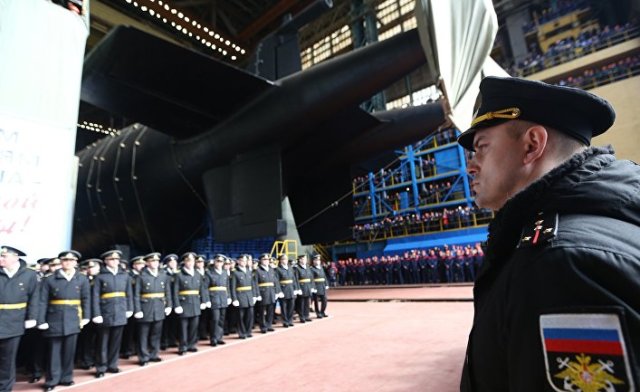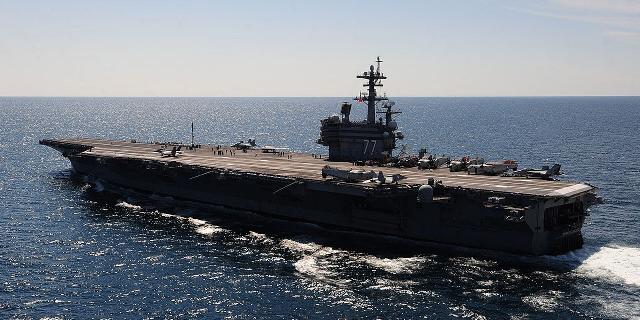The author believes that the time when American aircraft carriers were the most powerful force at sea is coming to an end. Weapons for their destruction were developed by the USSR. China has improved Soviet developments. But the last nail in the coffin of aircraft carriers can be driven by hypersonic missiles from Moscow and Beijing.
In August, China launched two ballistic missiles, which, according to a Chinese military expert, hit a moving target ship in the South China Sea at a distance of several thousand miles from the launch site.
If this is true, these tests are the first demonstration launches of Chinese long-range anti-ship ballistic missiles at a moving target. A month earlier, the United States had sent two carrier strike groups to the region. And the day before the launch, an American U-2 reconnaissance aircraft recorded live-fire exercises by the Chinese Navy.
"We are doing this because of their provocations," said Wang Xiangsui, a professor at Beijing University of Aviation and Astronautics and a former colonel in the Chinese army, referring to American aircraft carriers. He called the test launches "a warning signal from the United States."
To keep up with the rest, the Russian Navy conducted the third test launch of the Zircon anti-ship hypersonic cruise missile in the White Sea in December. The missile launched from the frigate reached a speed of Mach eight, after which it hit the "coastal target" at a distance of over 320 kilometers.
These tests once again indicate that American aircraft carriers, which have long been considered the masters of the seas and oceans, may face a real threat to their existence.
Primary goals
American aircraft carriers have always been considered the main targets for a potential enemy. Representatives of the Soviet Union especially disliked these ships, calling them "oppressors of national liberation movements": it happened that an American aircraft carrier, appearing off the coast of Iraq or Grenada, dramatically changed the local political situation with its mere presence. But the USSR also recognized that these huge, ugly vessels, capable of lifting hundreds of destructive aircraft into the air and carrying them on their decks, were the dominant fighting force at sea.
They fully recognized this after they realized that there were nuclear-powered aircraft among the carrier-based aviation. Declassified CIA documents show that in the 1980s, the Soviets rarely criticized the very idea of aircraft carriers during their internal discussions. Soviet military experts even praised the idea of naval strike aircraft, stating that it provides "consistently high combat readiness." One Soviet military document from 1979 even says that in likely war scenarios, aircraft carriers will become the primary target for an anti-ship attack, after which universal amphibious ships will enter the battle.
It is not surprising that the USSR developed a variant of a strike on enemy aircraft carriers - fast and not as expensive as launching a comparable number of its own aircraft carriers. It was planned to hit US aircraft carriers almost exclusively with anti-ship cruise missiles launched from submarines, bombers and surface ships. The ideal option was considered by Soviet military planners to be simultaneous launches of all missiles at once. To this end, the Soviets emphasized the role of cruise missiles in the Navy and tried to place them on all their ships, even aircraft carriers.
The main air delivery systems for such missiles were the Tu-16, Tu-95 and Tu-22 naval bombers. The main surface platforms for launching these missiles were the Berkut Project 1134, Project 58, and Project 1164 missile cruisers, as well as the Kirov nuclear missile cruiser.
Numerous nuclear and diesel-electric submarines, such as the Project 949A Antey and Project 651 submarines, were used to launch such missiles from underwater and above water positions.
But even that wasn't enough. American aircraft carriers with their carrier-based aircraft were such formidable weapons that the Soviets needed 100 bombers to attack one such ship, and their losses could be up to 50%. Soviet pilots were not even given detailed flight plans to return to airfields.
The Soviets also feared that many missiles would be shot down or intercepted, and therefore concluded that some of them must have nuclear warheads.
 |
| Launching of the Belgorod nuclear submarine in the Arkhangelsk region. |
| Source: © RIA Novosti, Pavel Lvov |
The dominance of aircraft carriers is on the wane
When the Cold War ended and the Soviet Union collapsed, it seemed that American aircraft carriers were more than guaranteed naval supremacy. These ships have played a key role in all the conflicts in which the United States has participated since the 1990s.
But the post-cold War world order is slowly changing. This is mainly due to the rapid increase in China's military power. And this will have negative consequences for the dominance of aircraft carriers.
American aircraft carriers have long been Beijing's biggest concern. Their presence deterred the PRC from invading Taiwan in the 1950s, and in 1996, two aircraft carrier strike formations shamed China by moving freely around the island during a period of heightened tensions. It turned out that Beijing recognizes the military power of the United States.
Since then, China has been investing a lot of money in developing anti-aircraft carrier weapons. First, he acquired a variety of weapons from Russia, including Su-30MKK multirole fighters, 12 Project 877 attack submarines, and four Project 956 guided missile destroyers.
Missiles were the focus of China's attention. It has one of the largest and most advanced missile arsenals in the world, and 95% of these missiles are not covered by the Treaty on the Elimination of Intermediate-range and Shorter-Range Missiles, under the terms of which the United States and Russia are prohibited from having missiles with a launch range of 500 to 5,000 kilometers. The United States recently withdrew from this treaty, but China has never signed it.
The missiles tested in August are variants of the DF-21 and DF-26 missiles, with launch ranges of 2,100 and 3,860 kilometers, respectively.
Flying higher, faster and further than Soviet cruise missiles, Chinese anti-ship ballistic missiles are able to overcome the missile defenses of aircraft carriers and escort ships. As a result, aircraft carriers will be forced to stay away from potential Chinese and Russian targets, and this may render their carrier-based aircraft useless.
This year, the US Department of Defense published a report stating that in the field of missile development, Beijing "has reached parity with the United States, and maybe even surpassed us."
New threats
Hypersonic missiles have become another serious threat.
Developing speeds in excess of five Mach (this is more than 6,100 kilometers per hour), hypersonic missiles are too fast and leave no chance of effective counteraction to the enemy's missile defense. They can also change their flight path, making it almost impossible to intercept them.
China has two hypersonic missiles in service: the DF-17 and the DF-100. Russia is developing several types of hypersonic weapons, and the Zircon seems to be the most promising against this background. The Russian leadership expresses the hope that it will be able to equip all new ships in the Navy with hypersonic weapons.
British officials have already spoken with great concern about the threat that Russian hypersonic weapons pose to their aircraft carrier.
"Hypersonic missiles are almost impossible to stop," one senior British Navy source told The Daily Mirror. "Unable to defend itself against Zircon-type missiles, the aircraft carrier will be forced to cruise beyond the range of this missile, hundreds of miles from the coast."
"His planes will be useless, and the entire basis of the carrier strike force will be unnecessary," this source said.
Little is known about the true capabilities of the new Russian and Chinese anti-ship weapons, but recent tests show that American aircraft carriers will not have long to reign supreme in the oceans.

